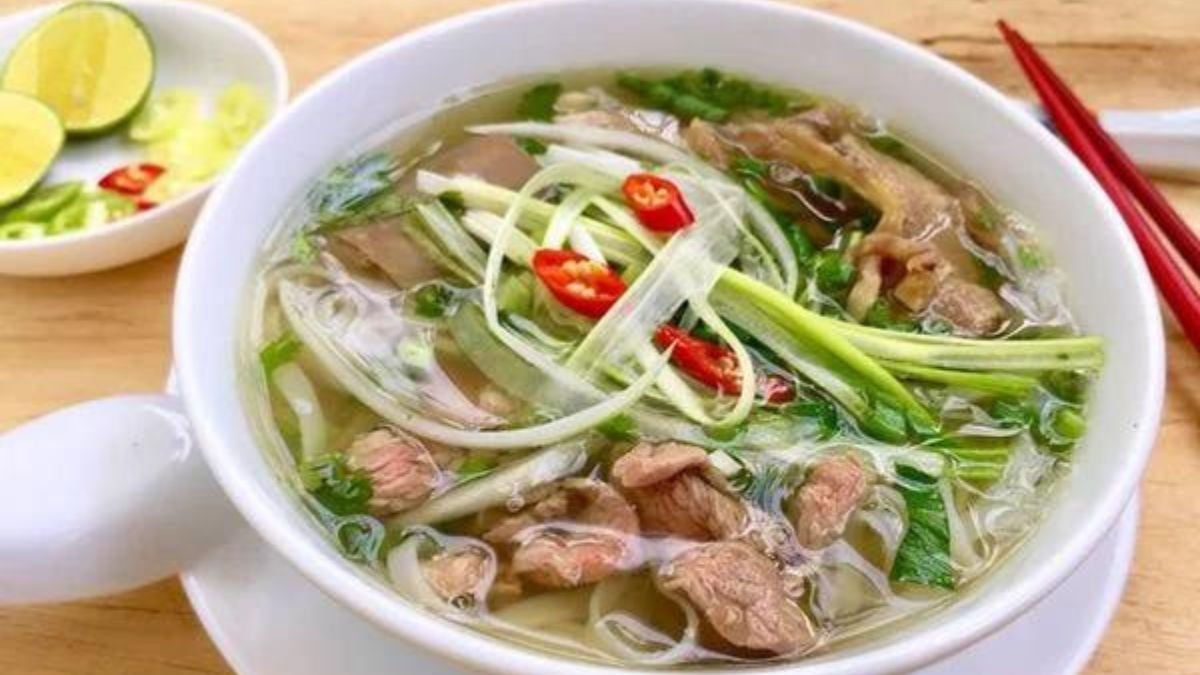Phở, pronounced “fuh,” is more than just a bowl of noodles—it’s a cultural icon of Vietnam. This beloved dish, often enjoyed as breakfast, lunch, or dinner, has gained international fame for its rich flavors and aromatic broth. In this guide, we’ll explore the origins, variations, and cultural significance of phở, as well as provide answers to some frequently asked questions.
Table of Contents
The Origins of Phở
Phở originated in the early 20th century in northern Vietnam, particularly in Hanoi. The dish’s exact origins are somewhat disputed, but it is widely believed to have been influenced by French colonial cuisine. The name “phở” is thought to come from the French word “pot-au-feu,” a type of beef stew. Over time, Vietnamese cooks adapted this concept to create a dish that featured a clear broth with rice noodles and various herbs and spices.
Ingredients and Preparation
The core of any good phở is its broth. Traditional phở broth is made by simmering beef bones (or chicken bones for phở gà) with spices such as star anise, cloves, cinnamon, and cardamom. The result is a flavorful, aromatic broth that forms the base of the dish.
Key Ingredients:
- Broth: Beef bones, water, onions, ginger, spices (star anise, cloves, cinnamon, cardamom)
- Noodles: Flat rice noodles (bánh phở)
- Meat: Thinly sliced beef (brisket, flank, or tenderloin) or chicken (for phở gà)
- Herbs and Vegetables: Fresh cilantro, Thai basil, lime wedges, bean sprouts, and sliced chili peppers
Preparation Steps:
- Prepare the Broth: Simmer beef or chicken bones with water, onions, ginger, and spices for several hours. Strain the broth to remove any solids.
- Cook the Noodles: Boil rice noodles until tender, then drain and set aside.
- Prepare the Meat: Thinly slice the beef or cook chicken as desired.
- Assemble the Dish: Place cooked noodles in a bowl, pour hot broth over them, and top with meat slices. Garnish with fresh herbs, bean sprouts, lime wedges, and chili peppers.
Regional Variations
Phở comes in various regional styles, each with its own unique twist:
- Phở Bắc (Northern Style): Characterized by its clear, simple broth and minimal garnishes. It typically features beef slices, fresh herbs, and a small amount of condiments.
- Phở Sài Gòn (Southern Style): Known for its rich broth and abundant garnishes, including bean sprouts, fresh basil, lime, and chili. Southern-style phở often includes a wider variety of meats and is typically sweeter than its northern counterpart.
- Phở Gà: A variation made with chicken instead of beef. The broth is lighter and often includes additional herbs for a fragrant, delicate flavor.
The Cultural Significance of Phở
Phở is deeply embedded in Vietnamese culture. It is often enjoyed during special occasions and family gatherings. The dish symbolizes warmth, comfort, and the essence of Vietnamese culinary tradition. For many Vietnamese people, phở is a way to connect with their heritage and share their culture with others.
FAQs About Phở
1. What is the difference between phở and ramen?
Phở and ramen are both noodle soups, but they differ in their origins, ingredients, and flavor profiles. Phở is a Vietnamese dish with a clear broth and rice noodles, flavored with spices like star anise and cinnamon. Ramen, on the other hand, is a Japanese dish that features a rich, often soy-based broth and wheat noodles.
2. Can I make phở vegetarian?
Yes, you can make a vegetarian version of phở by using vegetable broth and omitting meat. Substitute mushrooms or tofu for protein and use a variety of vegetables and herbs to enhance the flavor of the broth.
3. How can I store leftover phở?
To store leftover phở, separate the broth from the noodles and any garnishes. Store the broth in an airtight container in the refrigerator for up to 3-4 days. Noodles and garnishes can be stored separately. Reheat the broth before adding the noodles and garnishes when ready to eat.
4. What is the best way to reheat phở?
The best way to reheat phở is to heat the broth separately on the stove until it reaches a boil. Once the broth is hot, add the noodles and any additional ingredients. Avoid reheating phở in the microwave, as it may result in uneven heating and affect the texture of the noodles.
5. Can I use a slow cooker to make phở?
Yes, you can use a slow cooker to make phở. Simply place the beef bones, water, onions, ginger, and spices in the slow cooker and cook on low for 8-10 hours. Strain the broth and continue with the recipe as usual.
Phở is a dish that embodies the heart and soul of Vietnamese cuisine. Its rich flavors, aromatic broth, and comforting qualities make it a favorite for many. Whether you’re enjoying it in a traditional Vietnamese restaurant or making it at home, phở is a delightful experience that connects you to the rich culinary heritage of Vietnam.
